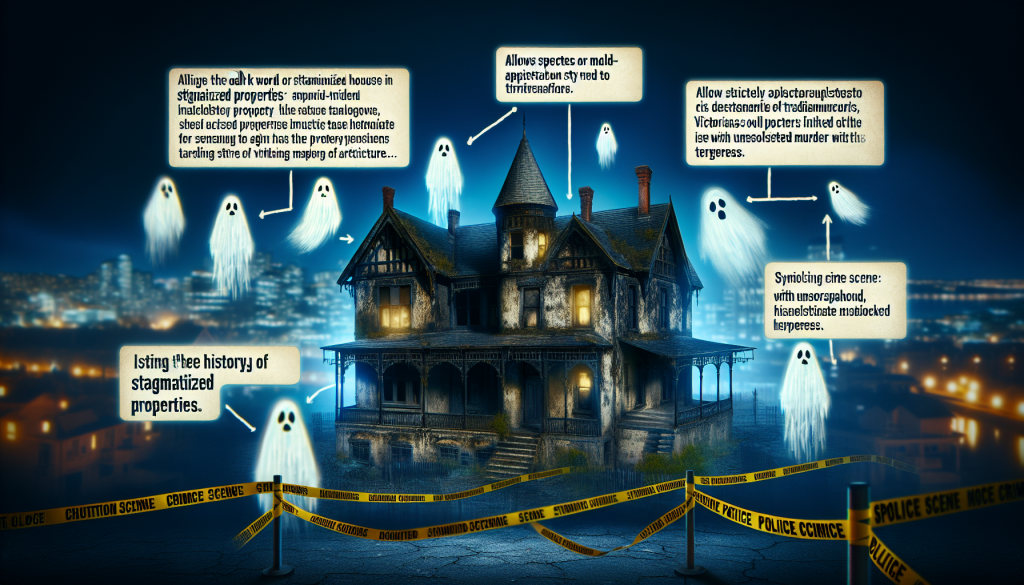
Ghosts, Murders, and Mold: Navigating the World of Stigmatized Properties
Stigma. It’s a word that carries a heavy weight, often associated with negative connotations and societal judgment. But what happens when that stigma is attached to a property? Suddenly, the idea of home becomes a tangled web of ghosts, murders, and mold. Welcome to the world of stigmatized properties.
In the real estate industry, stigma refers to any negative perception or association that may lower the value or desirability of a property. This could be due to a variety of factors, such as a history of violent crimes, paranormal activity, or even just the presence of mold. And while these factors may not necessarily impact the physical structure of a property, they can have a significant impact on its perceived value and potential buyers.
So, how does one navigate the world of stigmatized properties? Let’s take a closer look at the key elements and considerations when dealing with these unique spaces.
The Ghosts
We’ve all heard the stories of haunted houses and ghost sightings. But when it comes to real estate, these tales can have a significant impact on a property’s value. Properties that are known or rumored to be haunted can be a tough sell, as many potential buyers may be wary of the history and potential paranormal activity.
In fact, a study by Realtor.com found that over one-third of U.S. adults are open to living in a haunted house, but only at a discounted price. So, if you’re dealing with a stigmatized property that is believed to be haunted, be prepared to adjust the price accordingly.
The Murders
Another common stigmatized property issue is a history of violent crimes, particularly murders. While the incident may have taken place years ago, the stigma can still linger and affect a property’s value. In some cases, potential buyers may be interested in purchasing a stigmatized property because of its notoriety, but for others, it could be a deal-breaker.
When dealing with a property with a history of murders, it’s essential to be transparent and upfront with potential buyers. Be prepared to disclose any information about the incident and have documents readily available to ease any concerns. Additionally, consider working with a real estate agent who has experience with stigmatized properties and can help navigate any legal and ethical considerations.
The Mold
While it may not carry the same level of fear or intrigue as ghosts or murders, mold is a serious issue when it comes to stigmatized properties. The presence of mold can not only lower a property’s value but also pose health risks to potential buyers.
To address this issue, it’s crucial to have a professional mold inspection and remediation if necessary. Be sure to disclose any previous mold issues and offer documentation to prove that the issue has been addressed. Consider working with a mold specialist who has experience with stigmatized properties and can provide a thorough assessment and remediation plan.
In Conclusion
Navigating the world of stigmatized properties is not for the faint of heart, but it’s not impossible. By being transparent and upfront about any potential issues and working with experienced professionals, it is possible to overcome the stigma and find the right buyer for these unique properties. So, whether it’s ghosts, murders, or mold, always be honest, and remember, every property has a story to tell, even if it’s a bit stigmatized.
Now that you have a better understanding of what it takes to navigate the world of stigmatized properties, don’t let the ghosts, murders, or mold hold you back. With the right tactics and a bit of transparency, you can find the perfect buyer for even the most stigmatized of properties.
